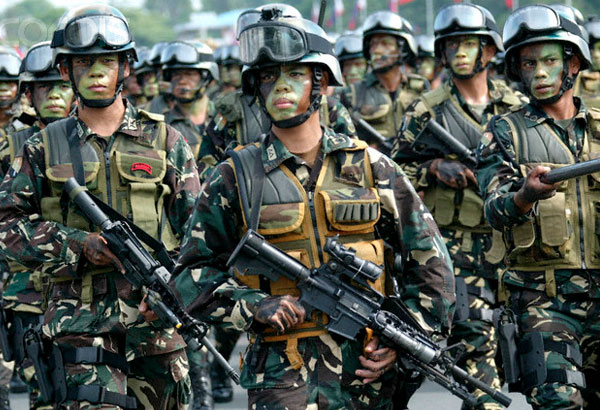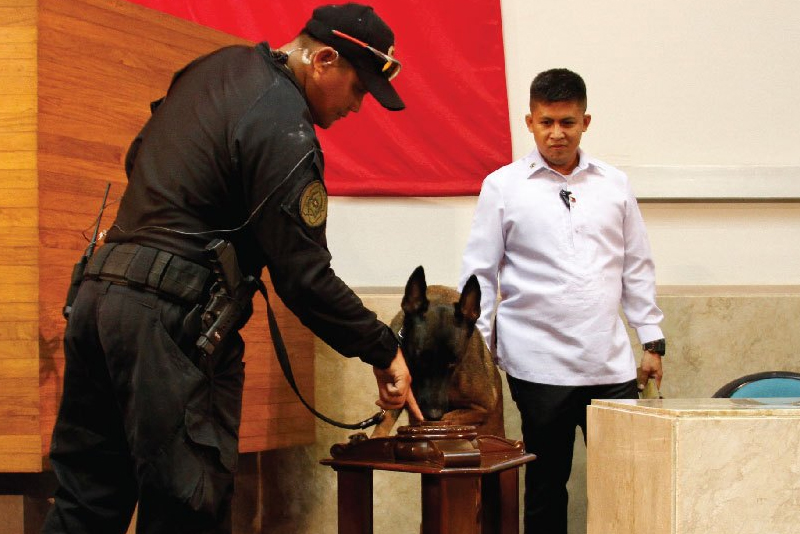From the Philippine Star (Feb 12):
‘Don’t attack soldiers on rescue missions’
 “We urge you not to attack our soldiers or in any other way disrupt the rescue and rehabilitation activities for our people,” said Col. Edgard Arevalo, chief of the Public Affairs Office of the Armed Forces of the Philippines (AFP). File photo
The military has appealed to the communist New People’s Army (NPA) for a temporary truce to allow the troops to help out in search and rescue operations in Surigao del Norte following last Friday’s devastating earthquake.
“We urge you not to attack our soldiers or in any other way disrupt the rescue and rehabilitation activities for our people,” said Col. Edgard Arevalo, chief of the Public Affairs Office of the Armed Forces of the Philippines (AFP).
“We urge you not to attack our soldiers or in any other way disrupt the rescue and rehabilitation activities for our people,” said Col. Edgard Arevalo, chief of the Public Affairs Office of the Armed Forces of the Philippines (AFP). File photo
The military has appealed to the communist New People’s Army (NPA) for a temporary truce to allow the troops to help out in search and rescue operations in Surigao del Norte following last Friday’s devastating earthquake.
“We urge you not to attack our soldiers or in any other way disrupt the rescue and rehabilitation activities for our people,” said Col. Edgard Arevalo, chief of the Public Affairs Office of the Armed Forces of the Philippines (AFP).
A powerful earthquake struck Surigao del Norte late Friday, particularly the capital Surigao City, killing at least six people and injuring more than 120 others.
Disaster and rescue officials had appealed for help as they continuerd to search for survivors.
However, the NPA, which has guerrillas operating in Surigao del Norte and the nearby province of Surigao del Sur in the Caraga region, ordered its members to continue operations against the government.
The NPA went on the offensive after announcing the end of a self-declared ceasefire earlier this month.
The government then dropped its ceasefire declaration with the rebels, and President Duterte scuttled the peace talks with the Communist Party of the Philippines (CPP) and the NPA.
Duterte ordered the military to prepare “for the inevitable conflict” with the NPA following the termination of peace negotiations.
Skirmishes between government troops and the NPA erupted across the country starting last week after Duterte announced all-out war against the communist rebels.
Late last month, NPA rebels kidnapped a soldier in Alegria town in Surigao del Norte.
Three policemen were also snatched by the rebels during a raid at a police station in Malimono town in July last year.
“Allow the soldiers every opportunity to help the victims of the earthquake,” Arevalo said,
addressing the NPA rebels in the region.
The troops who were earlier ordered to run after the NPA have been diverted to humanitarian and disaster response operations in the quake-stricken provinces, Arevalo said.
However, Jorge Madlos, alias “Ka Oris,” the titular head and spokesman of the NPA in Northern Mindanao, issued an order to continue the offensive against government troops nationwide.
He said the NPA fighters are no longer restricted by its active defense policy and arenow ready to take on the AFP in all-out war.
“Starting today, the unilateral declaration of interim ceasefire is now completely terminated. All NPA commands and territorial units, as well as people’s militia and self defense units, can now take full initiative to defend the people and advance their interests, especially in the face of the declaration of all-out war of the Duterte regime,” Madlos said in a statement.
AFP chief Gen. Eduardo Año has alerted the troops deployed for humanitarian and disaster operations to be on alert for possible NPA attacks.
“Continue to carry out your duties and be ready to embark on the task of assisting local and national governments. But be on the look out for those who might be out to sabotage your rescue and rehabilitation efforts,” Año told the troops.
Last Friday’s tremor prompted Maj. Gen. Benjamin Madrigal Jr., commander of the Army’s 4th Infantry Division covering the Caraga and Northern Mindanao areas, to mobilize the troops for search and rescue operations in Surigao City.
Military trucks were also used to transport much needed supplies for the earthquake victims.
The quake left a significant number of buildings and infrastructure damaged.
Roads in the city had visible cracks and a bridge connecting the towns of San Francisco and Malimono collapsed.
Rescue teams were checking for possible casualties in several villages in the city.
The city’s airport was temporarily closed due to deep cracks in the runway, while a major port in Lipata district in the city was briefly closed.
The Surigao provinces suffered power outage due to the tremor.
“Other casualties are yet to be confirmed. We have initial reports of casualties but in order not to duplicate accounting we are withholding this,” Arevalo said.
Lt. Col. Rico Amaro, commander of the Army’s 30th Infantry Battalion whose unit has operational jurisdiction over the Surigao provinces, is closely coordinating the Army’s disaster response with the local government units.
A crisis meeting was held yesterday at the provincial capital between city disaster officials and the military led Col. Franco Nemesio Gacal, commander of the 402nd Brigade.
Additional troops are now on standby in the event of a manpower shortfall in other quake-devastated areas.
The Philippine National Police (PNP) said they will provide additional manpower to assist in search and rescue operations in Surigao City.
Director Camilo Pancratius Cascolan, chief of the PNP Directorate for Operations, said the PNP is ready to provide additional manpower and equipment in the Caraga region.
Cascolan said Caraga regional police under Chief Supt. Rolando Felix is taking the necessary steps to assist the National Disaster Risk Reduction and Management Council (NDRRMC) and the AFP in the search and relief efforts.
“The regional director has coordinated with NDRRMC for specific actions being undertaken with the AFP in the area,” Cascolan said.
PNP spokesman Senior Supt. Dionardo Carlos said policemen from the Surigao del Norte police have been deployed for rescue operations and to prevent looting in the affected areas.
http://www.philstar.com/headlines/2017/02/12/1671414/dont-attack-soldiers-rescue-missions













